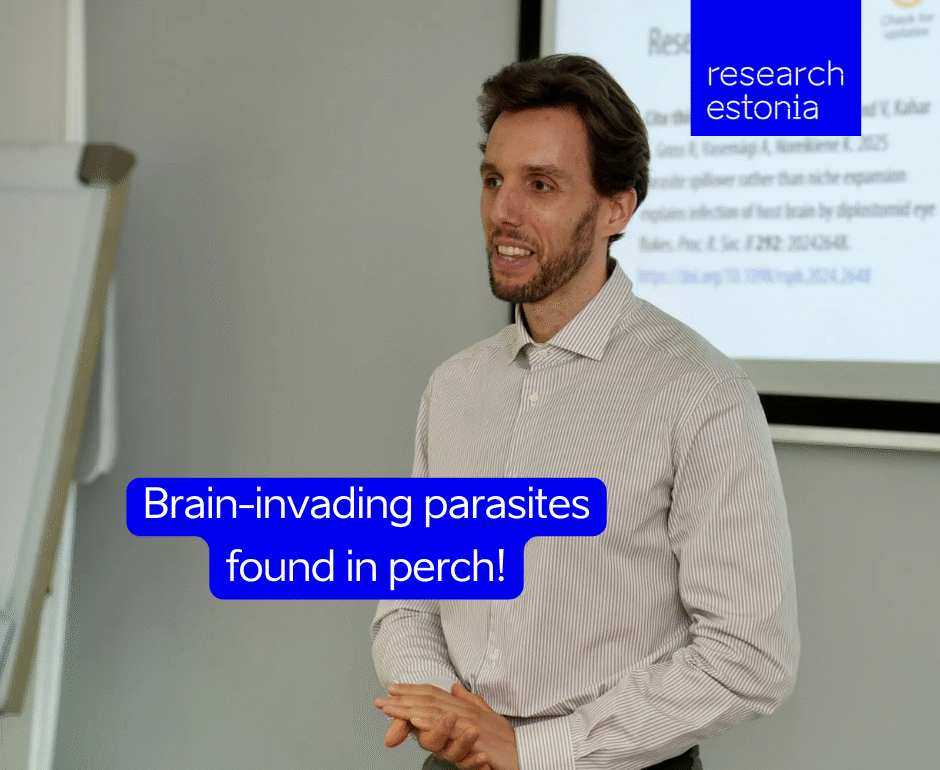Alfonso Díaz Suárez’s PhD thesis “Population genetics of fish host and diplostomid parasites at different scales: from individuals to populations and communities” shows that the genetic diversity and structure of pike and perch populations, as well as their parasite communities, differ on a small geographical scale.
Biodiversity, which includes the variation of ecosystems, species and genes, is on a sharp decline which can cause lasting ecosystem disruptions, affecting our environment. Thus understanding changes in biodiversity is essential for predicting and mitigating its consequences. This is especially relevant for certain groups of organisms such as parasites, as current ecosystems changes can promote the emerge and spread of new diseases.
Parasitism is a symbiotic relationship in which one organism (the parasite) exploits another (the host) for its own survival. Parasitises are one of the most diverse group of organisms, but despite their important role in ecological and evolutionary process, knowledge of their ecology and population genetics is scarce. Host-parasite interactions are highly diverse, varying among individuals, populations and communities across time and space.
This complexity, together with the difficulty of identifying parasite species, has resulted in a lack of information regarding the drivers of parasite diversity. A novel molecular genetic method, metabarcoding, allows the identification of a large number of different species from a single complex sample, and is emerging as a popular tool for studying parasite diversity and host-parasite interactions.
Parasitic flatworms of the Diplostomidae (Trematoda) family are among the most frequent parasites in fish populations. They form complex communities in the eyes of fish, and they are very difficult to distinguish between different species under the microscope. The present thesis improved the methodologies used to date to study the genetic diversity of fish host species and their parasitising diplostomids at individual, population and community levels.
Our results revealed that fish eye parasite communities are species-rich and dynamic, varying both within and between host species as well as between and within the lakes in a very small scale. Moreover, for the first time, the presence of two diplostomid species was detected in the perch brain, with a surprisingly high prevalence. By comparing parasite communities in the brain and the eye, it was found that brain infection is likely the result of a density-dependent process This emphasises the paucity of our knowledge about the ecology and habitat preferences of even widespread host organisms and their parasites.
In addition, the study of the anadromous pike in Saaremaa Island exposed a significant genetic variation between geographically close populations, which should be considered when designing conservation actions.
Overall, the thesis demonstrates the complex distribution of biodiversity and the ecological and evolutionary processes involving in hosts and parasites.
The thesis is supervised by Professor Anti Vasemägi, Senior Researcher Veljo Kisand, Senior Researcher Kristina Noreikiene (Vilnius University) and opposed by Professor Sofia Consuegra del Olmo (Swansea University).
This article was originally published on the webpage of Estonian University of Life Sciences.
🐟 If this peek into perch has you hooked, don’t just float there! Swim over to our next article for more fin-tastic tales and read more about how Estonian-Swedish Study Sheds Light on Perch Adaptation in Dark Water Lakes!
 Back
Back



